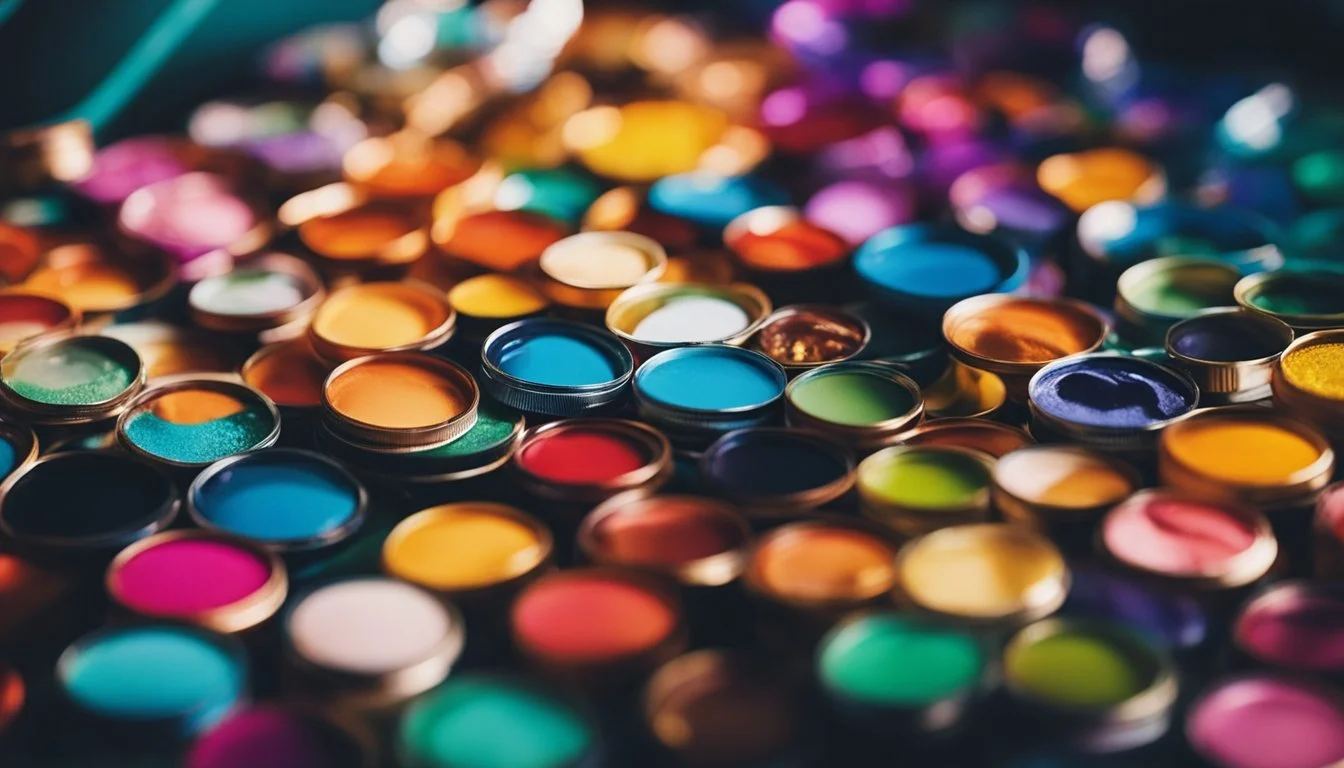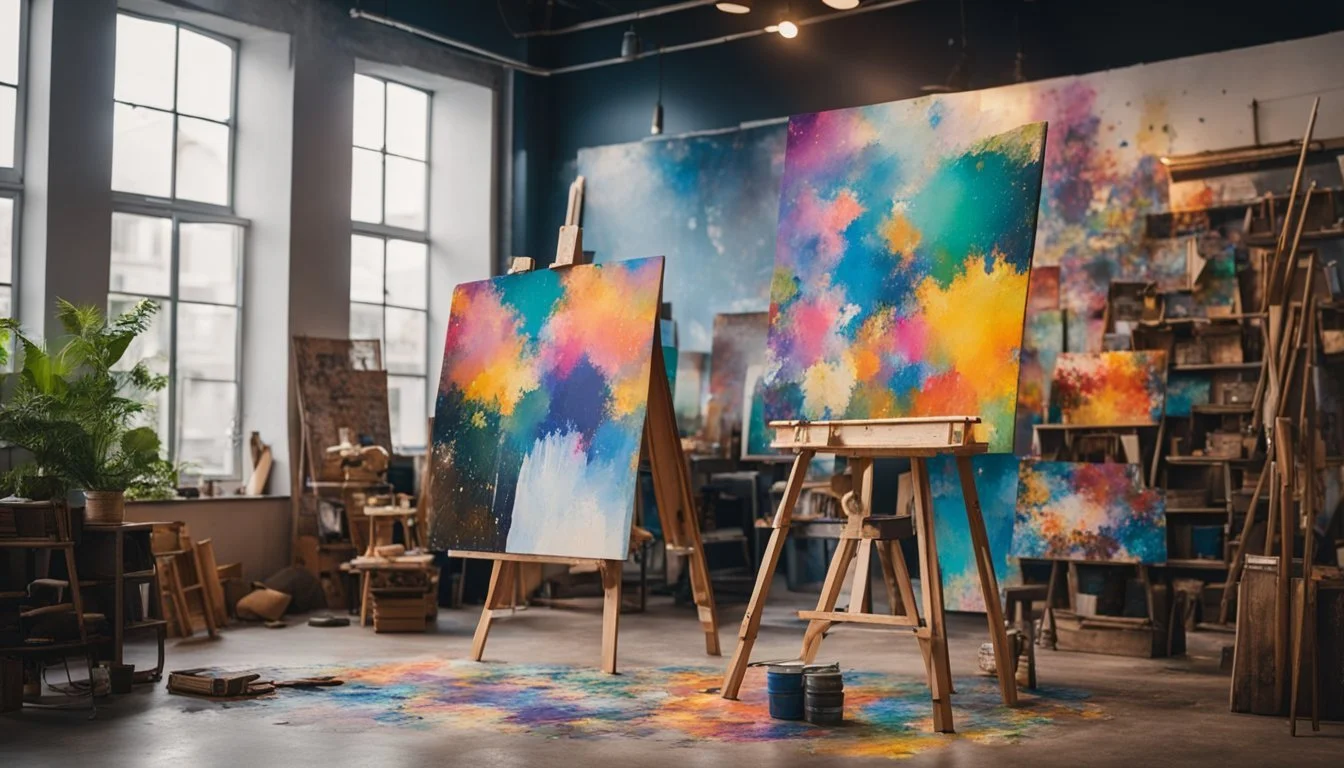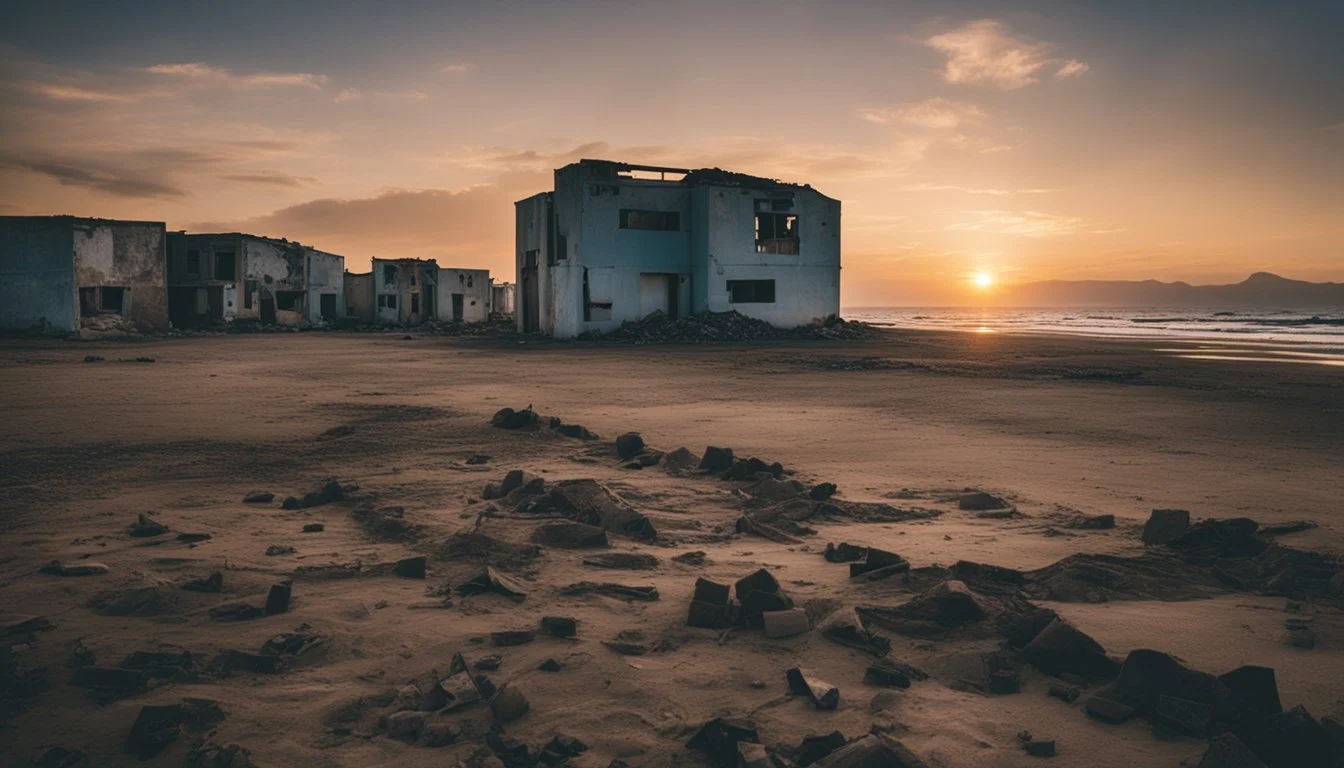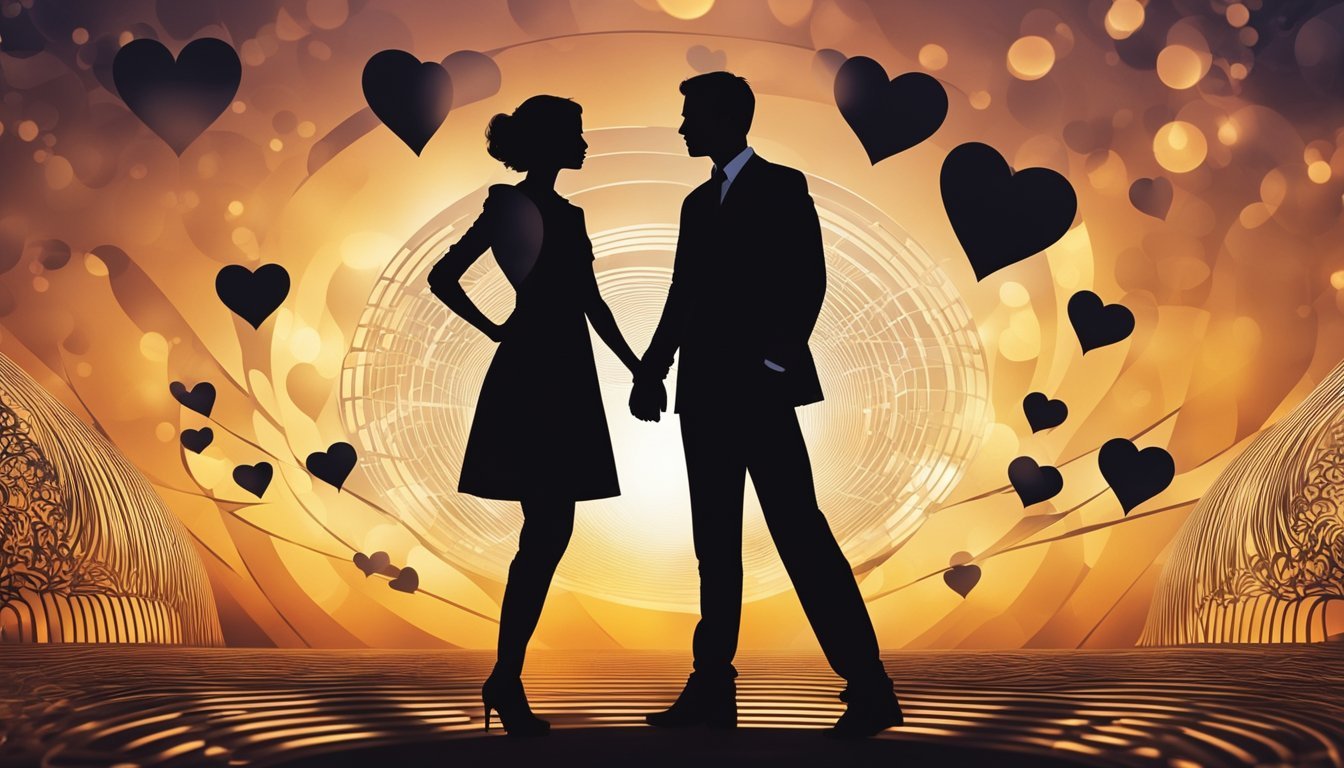9 Documentaries That Explore the Journey of Love Through Art
Visual Stories of Romance and Creativity
Art and love have long been intertwined, inspiring countless creators to explore the depths of human emotion through their work. Documentaries offer a unique window into this intimate relationship, allowing viewers to witness the passion and struggles of artists as they navigate matters of the heart.
These nine documentaries illuminate the complex connections between art and love, revealing how romantic experiences shape creative expression. From celebrated painters to emerging talents, the featured artists bare their souls on camera, providing profound insights into the transformative power of both art and love. Viewers will gain a deeper appreciation for the artistic process and the universal experiences that drive human creativity.
1) 'Cutie and the Boxer' by Zachary Heinzerling (2013)
'Cutie and the Boxer' explores the complex 40-year marriage of two artists, Ushio and Noriko Shinohara. This documentary offers an intimate look at their relationship and creative processes.
Ushio, known for his "boxing" painting technique, and Noriko, who creates autobiographical drawings, navigate the challenges of their artistic careers and personal lives. The film showcases their individual styles and collaborative efforts.
Zachary Heinzerling's directorial debut captures the raw spirit and beauty of the Shinoharas' unconventional partnership. It delves into themes of love, sacrifice, and artistic expression.
The documentary highlights Noriko's emergence as an artist in her own right, stepping out of her husband's shadow. It presents a nuanced portrait of their enduring bond, despite the hardships they face.
Through candid moments and archival footage, 'Cutie and the Boxer' paints a vivid picture of two lives intertwined by art and love. The film offers a unique perspective on the intersection of creativity and long-term relationships.
More information on 'Cutie and the Boxer'
2) 'The Artist is Present' by Marina Abramović (2012)
Marina Abramović, a renowned Serbian performance artist, takes center stage in this compelling documentary. The film chronicles her preparation for a major retrospective at New York's Museum of Modern Art in 2010.
The centerpiece of the exhibition was Abramović's groundbreaking performance piece, also titled "The Artist is Present." For 736 hours and 30 minutes, she sat motionless in the museum's atrium, inviting visitors to sit across from her and share a moment of silent eye contact.
This intimate portrait delves into Abramović's four-decade career, exploring her innovative and often controversial approach to art. The documentary captures the physical and emotional demands of her work, as well as the profound impact it has on both the artist and her audience.
Directed by Matthew Akers and Jeff Dupre, the film offers a unique glimpse into the world of performance art. It examines the power of human connection and the boundaries between artist and viewer.
"The Artist is Present" not only documents a pivotal moment in Abramović's career but also raises questions about the nature of art itself. It challenges viewers to consider the role of presence, endurance, and vulnerability in artistic expression.
3) 'Beltracchi: The Art of Forgery' by Arne Birkenstock (2014)
'Beltracchi: The Art of Forgery' explores the fascinating world of art forgery through the lens of Wolfgang Beltracchi, one of the most prolific forgers in recent history. The documentary delves into Beltracchi's life and career, showcasing his remarkable talent for mimicking the styles of famous artists.
Directed by Arne Birkenstock, the film offers a captivating look at how Beltracchi managed to fool the art world for nearly four decades. It reveals his meticulous techniques and the extent of his forgeries, which included works attributed to Max Ernst, Fernand Léger, and Heinrich Campendonk.
The documentary presents Beltracchi as a complex figure, both a master craftsman and a skilled con artist. It raises thought-provoking questions about authenticity, value, and the nature of art itself.
'Beltracchi: The Art of Forgery' provides viewers with a unique perspective on the intersection of creativity, deception, and the art market. The film offers insight into the largest art forgery scandal of the postwar era, challenging perceptions of artistic genius and originality.
4) 'Finding Vivian Maier' by John Maloof and Charlie Siskel (2013)
'Finding Vivian Maier' tells the story of a mysterious nanny who secretly took over 100,000 photographs during her lifetime. Her work was discovered decades later, posthumously establishing her as one of the 20th century's greatest street photographers.
The documentary follows John Maloof's journey to uncover Maier's identity and history. Maloof purchased a box of negatives at an auction, leading him to discover Maier's remarkable talent and enigmatic life.
Directors Maloof and Charlie Siskel trace Maier's path through New York City, France, and Chicago. They interview families who employed her as a nanny and housekeeper, revealing glimpses of her eccentric personality and private nature.
Maier's photography captures candid moments of urban life, showcasing her keen eye for composition and human emotion. The film explores her artistic process and the Rolleiflex camera she favored for her work.
'Finding Vivian Maier' raises questions about art, privacy, and recognition. It delves into the complexities of Maier's life and the posthumous fame she never sought during her lifetime.
5) 'Ai Weiwei: Never Sorry' by Alison Klayman (2012)
'Ai Weiwei: Never Sorry' offers an intimate look at one of China's most influential and controversial artists. This documentary chronicles Ai Weiwei's journey as he navigates the complex landscape of art and political activism in his home country.
Director Alison Klayman gained unprecedented access to Ai's life and work. She captures his creative process, his interactions with authorities, and his unwavering commitment to freedom of expression.
The film showcases Ai's various art projects, including his famous Sunflower Seeds installation at Tate Modern. It also delves into his social media presence and his use of technology to challenge government censorship.
'Never Sorry' highlights Ai's resilience in the face of adversity. It documents his detention by Chinese authorities and the subsequent outpouring of support from the global art community.
Through interviews with Ai, his family, and fellow artists, the documentary paints a nuanced portrait of a man whose art and activism have become inseparable. It explores themes of creative freedom, political dissent, and the power of art to inspire change.
More information on 'Ai Weiwei: Never Sorry' (IMDb)
6) 'Rivers and Tides' by Thomas Riedelsheimer (2001)
'Rivers and Tides' offers a mesmerizing glimpse into the world of Andy Goldsworthy, a renowned British artist. The documentary showcases Goldsworthy's unique approach to creating ephemeral sculptures using natural materials.
Riedelsheimer's film follows Goldsworthy as he works with ice, driftwood, leaves, and stones in various outdoor settings. The artist's creations are temporary, often lasting only until the tide comes in or the wind blows them away.
The documentary captures Goldsworthy's philosophical musings on art, nature, and time. It reveals his deep connection to the environment and his ability to find beauty in the transient.
'Rivers and Tides' received critical acclaim for its stunning visuals and contemplative atmosphere. The film's soundtrack, composed by Fred Frith, enhances the meditative quality of Goldsworthy's work.
Through Riedelsheimer's lens, viewers gain insight into the creative process and the ephemeral nature of Goldsworthy's art. The documentary serves as a thoughtful exploration of the relationship between human creativity and the natural world.
7) 'Marina Abramović in Brazil: The Space In Between' by Marco Del Fiol (2016)
Marina Abramović, renowned performance artist, embarks on a spiritual journey through Brazil in this documentary. She explores sacred rituals and pushes the boundaries between art, consciousness, and the immaterial.
The film follows Abramović as she seeks personal healing and artistic inspiration. Her experiences range from participating in traditional ceremonies to engaging with local spiritual practices.
Director Marco Del Fiol captures Abramović's introspective process as she confronts memories and past experiences. The documentary blends elements of a road movie with spiritual exploration.
Viewers witness Abramović's creative process unfold in real-time. The artist's vulnerability and emotional openness are on display as she navigates her transformative journey.
'The Space In Between' offers a unique perspective on the intersection of art and spirituality. It provides insight into Abramović's methods and motivations as she creates new work.
8) 'Bombay Beach' by Alma Har'el (2011)
'Bombay Beach' is a groundbreaking documentary that blurs the lines between reality and fiction. Directed by Alma Har'el, the film explores the lives of three residents in the desolate Salton Sea community of Bombay Beach, California.
Har'el employs an innovative approach, incorporating choreographed dance sequences into the documentary format. This unique style allows her to capture the dreams and inner lives of her subjects in a visually poetic manner.
The film focuses on Benny Parrish, a young boy with bipolar disorder; CeeJay Thompson, a teenager who moved to Bombay Beach to escape Los Angeles gang violence; and Red, an elderly man reflecting on his past.
'Bombay Beach' received critical acclaim for its artistic vision and emotional depth. It won Best Feature Documentary at the 2011 Tribeca Film Festival and was nominated for an Independent Spirit "Truer than Fiction" Award.
The documentary has been recognized for its genre-defying qualities and is studied in universities as an example of innovative filmmaking. It offers a compelling exploration of love, dreams, and human resilience in an unlikely setting.
More information on 'Bombay Beach'
9) 'Levitated Mass: The Story of Michael Heizer's Monolithic Sculpture' by Doug Pray (2013)
Doug Pray's documentary chronicles the creation and installation of Michael Heizer's monumental artwork "Levitated Mass" at the Los Angeles County Museum of Art (LACMA). The film captures the ambitious project from its inception to completion.
The centerpiece of the artwork is a 340-ton granite boulder, transported from a quarry in Riverside County to LACMA. Pray's film documents the boulder's 105-mile journey through 22 cities, which became a media spectacle and public event.
"Levitated Mass" explores the challenges faced by Heizer and the LACMA team in realizing this massive undertaking. It delves into the logistics, engineering feats, and bureaucratic hurdles involved in moving such an enormous object through urban areas.
The documentary also examines the public's reaction to the artwork and its transportation. It captures the mix of curiosity, excitement, and skepticism that surrounded the project.
Pray's film offers insight into Heizer's artistic vision and his long-standing fascination with monumental earthworks. It provides context for "Levitated Mass" within Heizer's broader body of work and the Land Art movement.
More information on "Levitated Mass" documentary
The Intersection of Art and Love
Art and love have been intertwined throughout human history, influencing culture and society in profound ways. Their connection has shaped artistic expression and cultural norms across generations.
Historical Context
Ancient Greek and Roman art frequently depicted love and romance through sculptures and paintings of gods and mortals. Medieval European art often portrayed religious love, with images of Madonna and Child. Renaissance artists like Botticelli explored romantic love in works like "The Birth of Venus."
The 18th and 19th centuries saw a shift towards more personal expressions of love in art. Romantic period paintings by artists like William Blake and John Constable emphasized emotional intensity and individual experiences.
Modern and contemporary art movements have continued to explore love's complexities. Surrealists like Salvador Dalí examined love's psychological aspects, while Pop artists like Robert Indiana created iconic love-themed works.
Cultural Impact
Love-inspired art has significantly influenced popular culture. iconic images like Gustav Klimt's "The Kiss" have become widely recognized symbols of romance. Music, film, and literature frequently draw inspiration from artistic depictions of love.
Art exploring diverse forms of love has played a crucial role in challenging societal norms. LGBTQ+ artists have used their work to increase visibility and acceptance. Feminist artists have critiqued traditional portrayals of love and relationships in art.
Public art installations centered on love themes often become popular attractions. Examples include Robert Indiana's LOVE sculpture in Philadelphia and Yayoi Kusama's love-themed exhibitions. These works create shared experiences and foster community connections.
Analyzing Love Through Artistic Expression
Artists throughout history have used their work to explore and convey the complexities of love. From iconic paintings to evolving romantic themes, art provides a powerful lens for examining human relationships and emotions.
Iconic Love-Inspired Artworks
Gustav Klimt's "The Kiss" depicts an intimate embrace, showcasing love through gold leaf and intricate patterns. Auguste Rodin's sculpture "The Kiss" captures passion in marble, portraying two lovers locked in a tender moment. Frida Kahlo's "Diego and I" reveals the artist's tumultuous relationship with her husband through vivid self-portraiture.
Marc Chagall's whimsical "Birthday" portrays the artist floating to kiss his wife, symbolizing love's ability to defy gravity. Robert Indiana's bold "LOVE" sculpture has become an iconic representation of the emotion in pop art form.
Evolution of Romantic Themes
Renaissance art often depicted love through mythological scenes, like Botticelli's "Birth of Venus." The Romantic era embraced passionate, idealized portrayals of love, evident in works like Eugène Delacroix's "The Barque of Dante."
Impressionists like Renoir captured fleeting moments of affection in everyday life. Modern artists experimented with abstract representations of love, such as Pablo Picasso's fragmented lovers in Cubist works.
Contemporary art explores diverse forms of love, including LGBTQ+ relationships and self-love. Digital artists use new media to express love in the technological age, creating interactive and immersive experiences.






